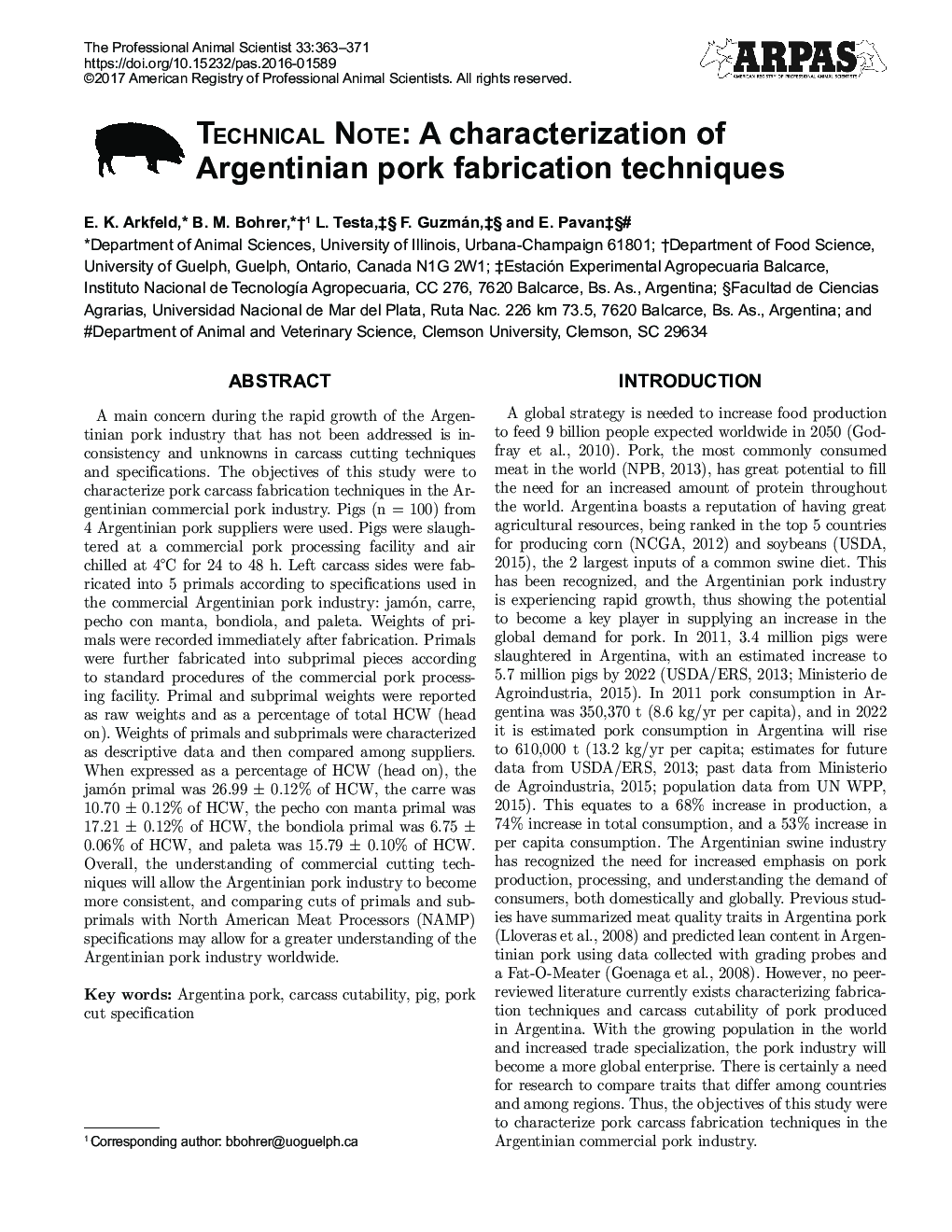| Article ID | Journal | Published Year | Pages | File Type |
|---|---|---|---|---|
| 8503757 | The Professional Animal Scientist | 2017 | 9 Pages |
Abstract
A main concern during the rapid growth of the Argentinian pork industry that has not been addressed is inconsistency and unknowns in carcass cutting techniques and specifications. The objectives of this study were to characterize pork carcass fabrication techniques in the Argentinian commercial pork industry. Pigs (n = 100) from 4 Argentinian pork suppliers were used. Pigs were slaughtered at a commercial pork processing facility and air chilled at 4°C for 24 to 48 h. Left carcass sides were fabricated into 5 primals according to specifications used in the commercial Argentinian pork industry: jamón, carre, pecho con manta, bondiola, and paleta. Weights of primals were recorded immediately after fabrication. Primals were further fabricated into subprimal pieces according to standard procedures of the commercial pork processing facility. Primal and subprimal weights were reported as raw weights and as a percentage of total HCW (head on). Weights of primals and subprimals were characterized as descriptive data and then compared among suppliers. When expressed as a percentage of HCW (head on), the jamón primal was 26.99 ± 0.12% of HCW, the carre was 10.70 ± 0.12% of HCW, the pecho con manta primal was 17.21 ± 0.12% of HCW, the bondiola primal was 6.75 ± 0.06% of HCW, and paleta was 15.79 ± 0.10% of HCW. Overall, the understanding of commercial cutting techniques will allow the Argentinian pork industry to become more consistent, and comparing cuts of primals and subprimals with North American Meat Processors (NAMP) specifications may allow for a greater understanding of the Argentinian pork industry worldwide.
Keywords
Related Topics
Life Sciences
Agricultural and Biological Sciences
Animal Science and Zoology
Authors
E.K. Arkfeld, B.M. Bohrer, L. Testa, F. Guzmán, E. Pavan,
